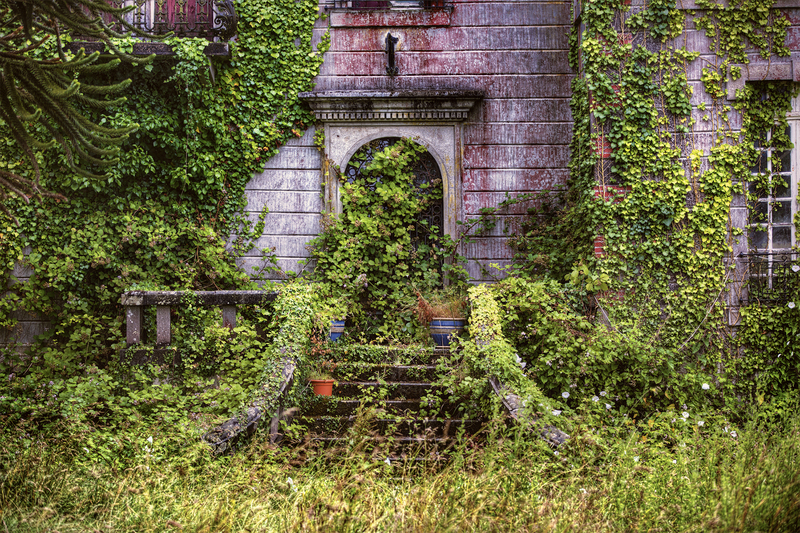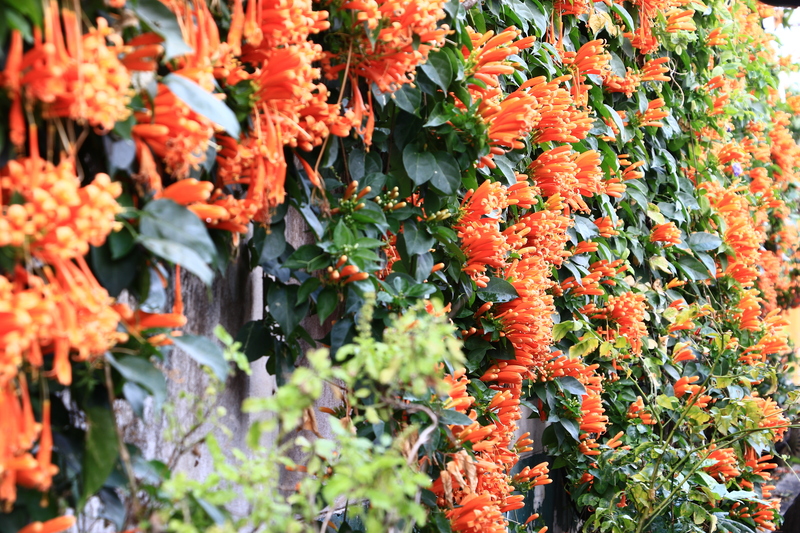How to Build a Flexible Garden with These 3 Expert-Recommended Tips
If you've ever felt confined by the rigidity of traditional gardening layouts or overwhelmed by sudden changes in weather or plant needs, it's time to embrace a new approach. Designing a flexible garden not only offers versatility but also ensures that your outdoor space continually adapts and thrives through every season, trend, and challenge.
In this comprehensive guide, we'll delve into how you can build a flexible garden with three actionable, expert-approved tips that make transformation simple, affordable, and rewarding. Whether you're working with a large backyard or a small balcony, these tips will help you create a dynamic, resilient oasis that grows alongside your needs.
What is a Flexible Garden? Understanding the Benefits
Before we get into the practical tips, let's clarify what a flexible garden truly means. Flexibility in gardening refers to designing and maintaining a space that can easily adapt to changing needs, preferences, or conditions. Traditional gardens often feature fixed beds and permanent structures, but garden flexibility emphasizes movable elements, modular layouts, and multi-purpose zones.
- Adaptability to Seasons: Easily change plants and layouts for different weather patterns.
- Changing Aesthetic Styles: Update your garden theme with minimal effort.
- Space Utilization: Make the most out of small or irregular spaces.
- Sustainable Practices: Quickly implement eco-friendly upgrades.
Flexible gardening is ideal for modern lifestyles--accommodating renters, DIY enthusiasts, or anyone who likes to experiment. With these advantages in mind, let's dive into the expert-recommended steps for getting started.

Expert Tip #1: Embrace Modular Planters and Moveable Features
Why Modular Planters are Game-Changers
The cornerstone of a flexible garden design is modularity. Modular planters--portable containers that can be easily rearranged or swapped out--allow you to customize and reconfigure your planting scheme at will. Professionals recommend this approach for both aesthetic variety and practical benefits.
- Easy Relocation: Move plants according to sunlight, wind, or rainfall patterns. For example, shade-loving plants can be wheeled into a sheltered corner during the peak of summer.
- Seasonal Gardening: Rotate crops or ornamental plants as required. Grow salad greens in spring, then swap in flowering annuals for summer.
- Optimize for Events: Instantly open up space for gatherings, parties, or children's play by moving planters to the edges.
- Minimize Soil-Borne Disease: Limit long-term buildup of pests or pathogens in fixed beds.
Types of Modular and Moveable Features
- Mobile Raised Beds: Often equipped with wheels, they offer ample root space and can be shifted to catch optimal sun.
- Stackable Planters: Let you grow vertically and alter height and arrangement with ease.
- Lightweight Pots & Troughs: Fiberglass, resin, or even fabric grow bags provide flexibility for every budget.
- Moveable Garden Screens & Trellises: Change plant privacy, windbreak, or decorative displays whenever needed.
Expert Insight: For ultimate adaptability, pair your modular containers with a wide variety of plant choices--from edible herbs to vibrant ornamentals.
Expert Tip #2: Create Multi-Purpose Zones within Your Space
Breaking Up the Space for Maximum Utility
The second key to building a flexible garden is to design areas that serve more than one function. Multi-purpose zones ensure your outdoor area can easily transform based on activity and season.
- Dining & Entertaining Zones: Use foldable tables and stackable chairs. These can be removed or repositioned to turn a patio into a yoga space or a children's play area.
- Convertible Planting Areas: Install temporary raised beds or container groupings that can be repurposed as herb gardens, flower patches, or vegetable plots.
- Relaxation Nooks: Hammocks, movable lounges, and lightweight pergolas create inviting retreats that can change location depending on the sun's path or privacy needs.
Tips to Maximize Flexibility in Garden Zones
- Mark Boundaries Subtly: Use stepping stones, low planters, or decorative mulch instead of permanent walls or fencing.
- Utilize Vertical Space: Install hooks, trellises, or shelves. These make it easy to hang baskets, tools, and lighting, freeing your ground space for different uses.
- Incorporate Multi-Use Furniture: Benches with storage, foldable screens, or even portable greenhouses can double as plant stands and seating.
By layering functions within each area and avoiding permanent fixtures, you'll give yourself the power to rearrange, redecorate, and repurpose--keeping your garden always fresh and in tune with your evolving lifestyle.
Expert Tip #3: Invest in Smart Irrigation and Adaptable Lighting
The Power of Modern Garden Technology
No matter how moveable or modular your plants are, a truly flexible garden needs infrastructure that can adapt. Two essential components stand out: smart irrigation systems and adjustable lighting solutions.
- Smart Drip Irrigation: Install hose-based systems with quick-connects, adjustable emitters, and app control. These systems flex with new layouts and provide water efficiency, whether your planters are grouped together or spread apart.
- Soaker Hoses: Arrange and re-arrange on the soil surface or in raised beds to match new plant locations.
Using flexible watering solutions not only saves time and resources but also accommodates changes in plant arrangements, helping everything thrive with minimal waste.
- Solar-Powered, Portable Lighting: Stake lights, string fairy lights, and lanterns can be placed wherever they're needed.
- Smart LEDs with Shade Sensors: Set them to turn on automatically based on time of day or weather, maintaining ambiance and safety.
Implementing Adaptable Infrastructure
When laying out hoses or electrical cables, keep future adjustments in mind. Bury conduits in shallow trenches or use removable cable covers so you can easily reroute as your garden grows and changes.
Pro Tip: Integrate self-watering planters and battery-operated smart lights for a truly plug-and-play experience--ideal for renters or anyone wanting minimal installation.
Additional Ideas to Build a Flexible Garden
While the above expert strategies are the foundation, consider these supplementary ideas to further enhance your garden's flexibility:
- Choose Perennials and Annuals Wisely: Mix fast-growing annuals with hardy perennials to keep beds looking lush even as you swap out plants.
- Go Vertical: Use trellises, wall-mounted pockets, or hanging baskets--perfect solutions for small spaces or for creating privacy screens that can be moved.
- Build Storage into Your Design: Weather-proof benches, tool sheds, or outdoor closets keep clutter in check and leave garden zones ready for a quick transformation.
- Mulching and Ground Covers: Opt for materials that are easy to shift, such as bark chips or gravel, to allow for future expansion or rearrangement.
- Create Wildlife Havens: Add portable birdbaths, bee hotels, or butterfly boxes which can be moved around depending on plant blooms and seasons.
Integrating these smart choices will amplify the adaptability, sustainability, and beauty of your flexible garden setup.
Common Mistakes to Avoid When Building a Flexible Garden
As you embark on creating a flexible and dynamic garden, beware of these typical pitfalls:
- Overcrowding: Modular containers must still allow air circulation--leaving enough room for future expansion.
- Ignoring Drainage Needs: All moveable planters should have adequate drainage to prevent root rot (use gravel, crock, or mesh at bases).
- Incorrect Plant Selection: Pair plants based on light, water, and nutrient needs. Avoid combining species with vastly different requirements in the same pot or area.
- Forgetting About Weight: When opting for moveable features, keep them lightweight or use built-in wheels for easy repositioning.
Addressing these challenges early will ensure your adaptable outdoor space remains functional and easy to manage.

Flexible Gardening FAQs
What are the quickest changes I can make for more flexibility?
Start by grouping your plants in lightweight or wheeled containers and adding string lights or portable garden furniture. These instant changes provide immediate adaptability.
How do I ensure my flexible garden remains sustainable?
Opt for recycled materials, drought-resistant plants, and efficient watering systems. Building sustainability into your design reduces environmental impact while enhancing resilience.
Can I achieve a flexible garden in a small urban space?
Absolutely! Use stackable or wall-mounted planters, multi-use furniture, and compact modular beds. Even balconies can host a lush, versatile garden with these strategies.
Conclusion: Reap the Rewards of a Flexible, Future-Proof Garden
Learning how to build a flexible garden empowers you to adapt quickly, experiment with ease, and enjoy outdoor living to the fullest--no matter the changes in climate, lifestyle, or taste. By incorporating modular containers, multi-purpose zones, and adaptable infrastructure, you ensure that your space stays beautiful and functional year-round.
Innovate, experiment, and evolve your outdoor sanctuary while saving time and resources. Start transforming your garden with these expert-recommended tips today, and discover the difference flexibility makes!
Ready to create your dream garden? Embrace flexibility, and let your space grow with you!



